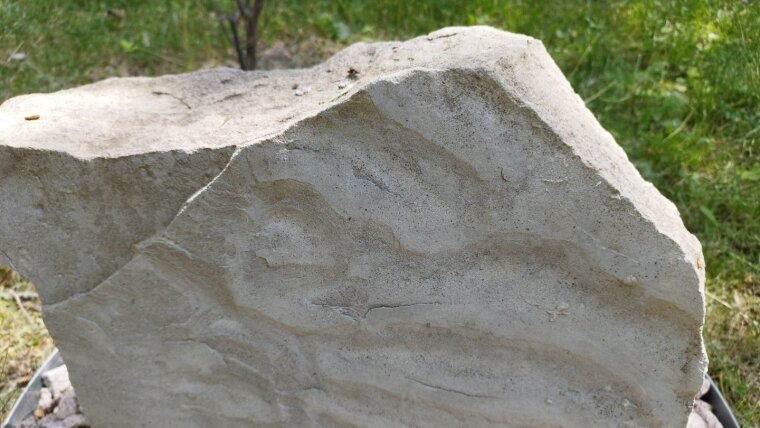
Ooid-bearing sandstone is a sedimentary rock composed of sand grains with a special structure called ooids.
Sandstone is a clastic sedimentary rock composed mainly of sand grains, which are usually quartz [2External link]. The term "sandstone" refers to the dominant proportion of sand grains ranging in size from 0.063 to 2 mm. Often other minerals such as mica, calcite, or ore-bearing minerals are also present in the rock [3External link].
Ooid-bearing sandstone is a special variety of sandstone in which the sand grains have a round or elliptical shape and are called ooids. Ooids are formed by the layered deposition of minerals around a core, such as a sand grain or shell. This layered structure gives the rock a characteristic appearance [1External link].
Ooid-bearing sandstone can have different colors, including yellow, yellow-brown, red, green, and black. The color variations are caused by various minerals and impurities. For example, iron oxides such as hematite and goethite can result in red hues, while the mineral glauconite can produce green colors. Black ooid-bearing sandstone may contain bitumen and carbon compounds [3External link].
The formation of ooid-bearing sandstone is associated with the formation of ooids. Ooids form in shallow, warm waters where wave action and microbial activity surround the ooid cores with mineral layers. Over time, these ooids can solidify into sandstone. Ooid-bearing sandstone is commonly found in coastal and reef environments because these conditions are suitable for ooid formation [1External link].
The properties of ooid-bearing sandstone can vary depending on its specific composition and degree of consolidation. In general, sandstone has a fine-grained structure with grain size ranging from 0.06 to 2 mm. The rock has a density of 2.6 to 2.72 g/cm³. The individual sand grains are well sorted and may have a massive structure or a flow structure [3External link].
Ooid-bearing sandstone is often used as a building material or for decorative purposes because of its aesthetic properties. Due to the unique structure of the ooids and the possible color variations, ooid-bearing sandstone can create interesting patterns and textures in building facades, flooring, and wall cladding. It also has good engineering properties such as strength and weathering resistance, which support its use in the construction industry [1External link].
Overall, ooid-bearing sandstone is a special sedimentary rock characterized by the presence of ooids. Its unique structure, color variety, and usability make it an interesting rock for both geological studies and architectural applications.
Location of the rock Ooid-bearing sandstone near the village Kraftsdorf
Image: Thomas Voigt